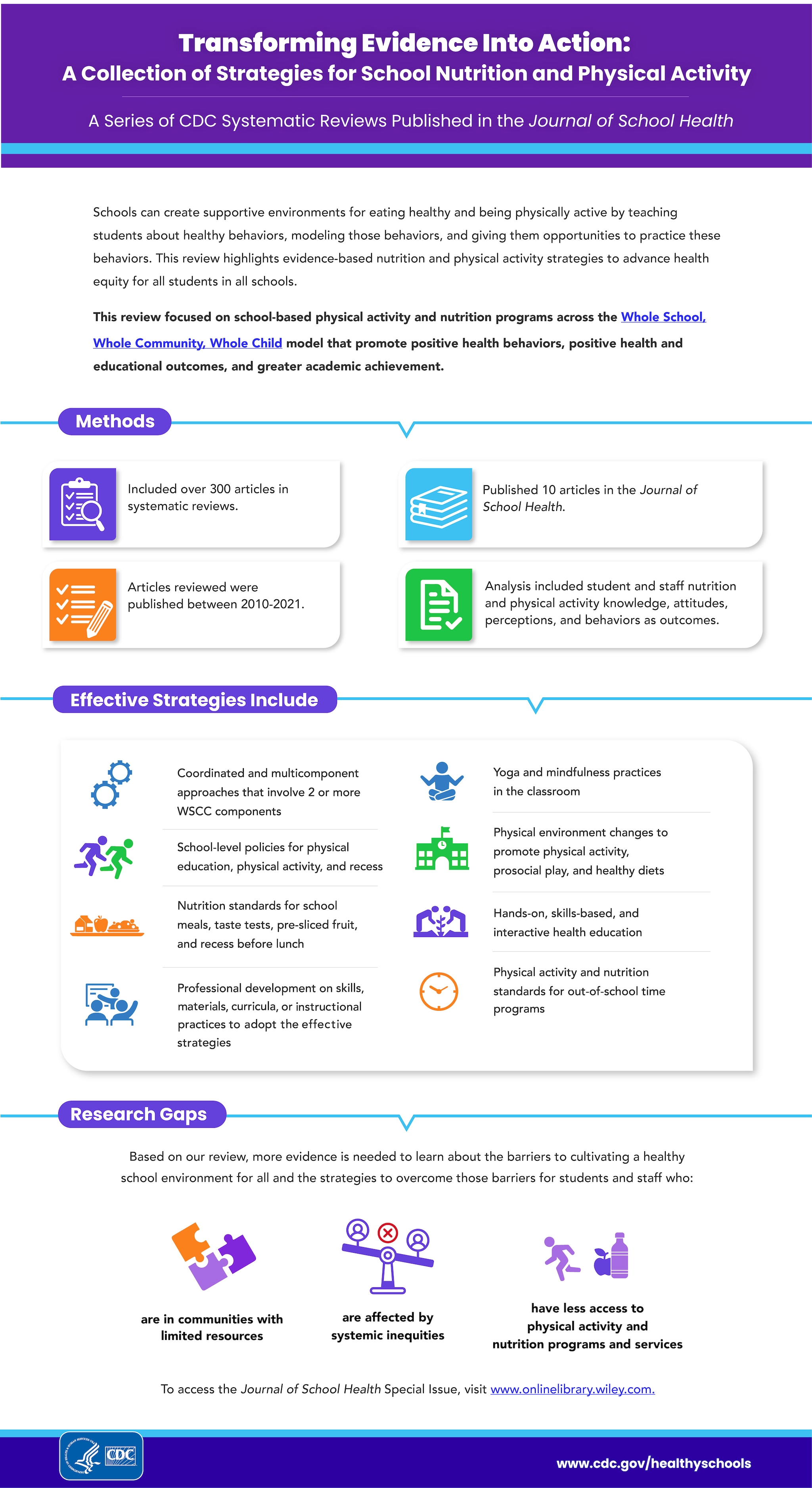What to know
- Teach students about healthy eating behaviors and model these behaviors to create a supportive environment.
- Give students the opportunities to practice healthy eating and behaviors.
- Schools can access CDC evidence-based nutrition and physical activity strategies to advance health equity for all students in all schools.
- The strategies are from a series of CDC systematic reviews published in the Journal of School Health.

Download infographic

Overview
The review highlights evidence-based nutrition and physical activity strategies to advance health equity for all students in all schools.
The review focuses on school-based PA and nutrition programs across the Whole School, Whole Community, Whole Child (WSCC) model that promotes positive health behaviors, positive health and educational outcomes, and greater academic achievement.
Methods
- Included over 300 articles in systematic reviews.
- Published 10 articles in the Journal of School Health.
- Articles reviewed were published between 2010-2021.
- Analysis included student and staff nutrition and physical activity knowledge, attitudes, perceptions, and behaviors as outcomes.
Effective strategies include
- Coordinated and multicomponent approaches that involve 2 or more WSCC components
- Yoga and mindfulness practices in the classroom
- School-level policies for physical education, physical activity, and recess
- Physical environment changes to promote physical activity, prosocial play, and healthy diets
- Nutrition standards for school meals, taste tests, pre-sliced fruit, and recess before lunch
- Hands-on, skills-based, and interactive health education
- Professional development on skills, materials, curricula, or instructional practices to adopt the effective strategies
- Physical activity and nutrition standards for out-of-school time programs
Research gaps
Based on the review, more evidence is needed to learn about the barriers to cultivating a healthy school environment for all. Additionally, strategies are needed to overcome these barriers for students and staff who:
- Are in communities with limited resources.
- Are affected by systemic inequities.
- Have less access to physical activity and nutrition programs and services.
